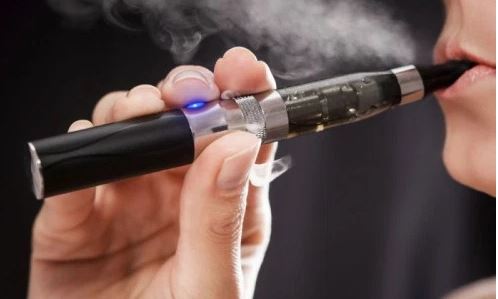
An investigative piece published yesterday by Thomson Reuters on the Juul vaping crisis takes an in-depth look at the marketing precepts used by the manufacturer. Juul’s processes allowed nicotine to be delivered so efficiently that the company’s engineers explored features to stop users from ingesting too much of the drug too quickly.
The San Francisco startup that invented the groundbreaking Juul e-cigarette had a central goal during its development: captivating users with the first hit. The company had concluded that consumers had largely rejected earlier e-cigarettes, former employees told Reuters, because the devices either failed to deliver enough nicotine or delivered it with a harsh taste. Developers of the Juul tackled both problems with a strategy they found scouring old tobacco-company research and patents: adding organic acids to nicotine, which allowed for a unique combination of smooth taste and a potent dose.
Employees tested new liquid-nicotine formulations on themselves or on strangers taking smoke breaks on the street. Sometimes, the mix packed too much punch – enough nicotine to make some testers’ hands shake or send them to the bathroom to vomit, a former company manager told Reuters.
Juul never produced an e-cigarette that limited nicotine intake; they now are at the center of vaping lawsuits over lung illnesses, strokes, and other serious injuries. The rise of Juul’s success follows an epidemic of teenage nicotine use that has brought regulatory scrutiny on the company. Congressional investigators, state attorneys general and health advocates have so far focused on whether Juul targeted young people through its marketing and the dessert-like flavors of some Juul nicotine liquids, such as creme brulee or mango.
The breakthrough “nicotine salts” formula that made the Juul e-cigarette so addictive – and ignited the company’s explosive market-share growth – made Juul especially attractive to teenagers and other new users who otherwise would never have smoked cigarettes, according to interviews with more than a dozen tobacco researchers, pediatricians, and a Reuters review of Juul patents and independent research on nicotine chemistry. The device delivers the drug more efficiently than a cigarette, according to emerging academic research into Juul’s formula and the company’s own patent documents.
In response to queries from the reporter behind the story, Chris Kirkham, Juul said that it never intended to attract underage customers. Early consumer marketing of the product seldom refers to nicotine, but the marketing does include youthful actors and shows the use of the product as an attractive alternative to cigarettes. The company’s sales force, according to the Reuters piece, “emphasized the device’s unique addictive power by showing store owners charts depicting how the Juul device delivers nicotine to the bloodstream as efficiently as a traditional cigarette.” Langdon & Emison continues to represent individuals nationwide who have used these e-cigarettes and have been addicted to nicotine or have developed lung illnesses (including popcorn lung), strokes, burn injuries or seizures.


